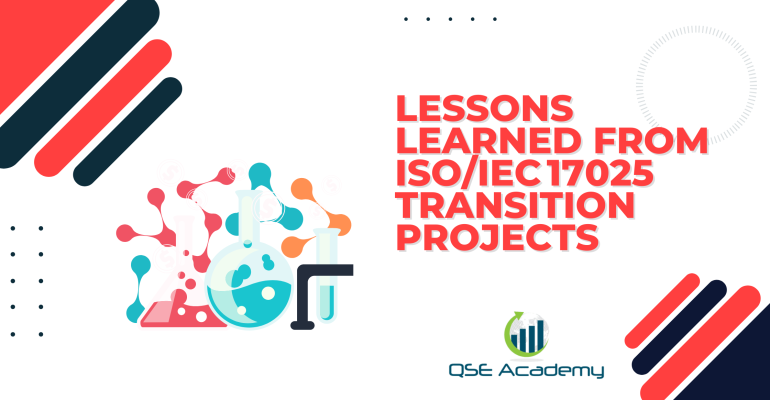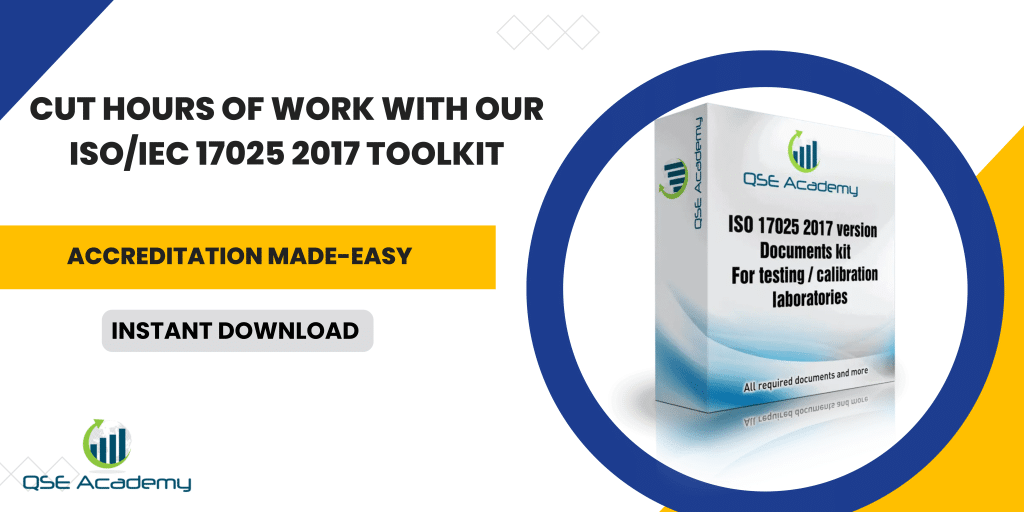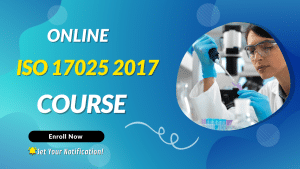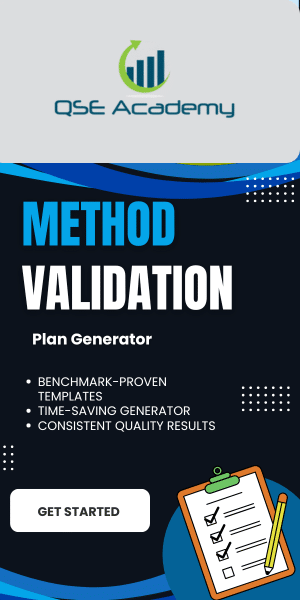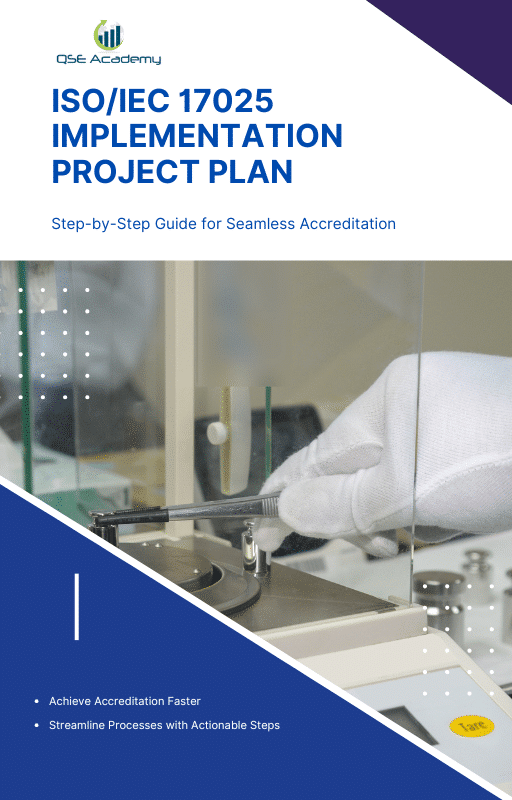Lessons Learned from ISO/IEC 17025 Transition Projects
Last Updated on October 13, 2025 by Melissa Lazaro
Turning ISO/IEC 17025 Transition Experience into Strategy
Every lab that’s been through the ISO/IEC 17025:2017 transition knows it wasn’t just an update—it was a complete shift in how laboratories think about quality, competence, and risk. For some, it meant a smooth evolution. For others, it was a painful learning curve that exposed weak spots in documentation, systems, and training.
After years of guiding laboratories through the process—from calibration and testing facilities to environmental and medical labs—I’ve seen patterns emerge. The same challenges, the same breakthroughs, and, most importantly, the same lessons that determine whether a transition succeeds or struggles.
This article gathers those lessons in one place. It’s not theory—it’s what works in real labs under real audit pressure. You’ll find the most valuable takeaways from dozens of transition projects: how to start with clarity instead of confusion, how to use audits and gap analyses as tools instead of checkboxes, and how to embed risk-based thinking without drowning in paperwork.
Whether your lab has already achieved accreditation under ISO/IEC 17025:2017 or you’re refining your system post-transition, these lessons will help you strengthen what’s in place, close lingering gaps, and make your quality system more resilient.
Because transitioning wasn’t the finish line—it was the beginning of a smarter, leaner, and more confident way to run your lab.
Lesson 1 – Start with Clarity, Not Checklists
The biggest mistake most labs made during the ISO/IEC 17025:2017 transition was jumping straight into “update mode.” They opened old procedures, started rewriting templates, and added new forms—all without fully understanding why the changes mattered. That approach almost always led to confusion, duplicated work, and frustrated staff.
The successful transitions started differently. They began with clarity.
Before touching a single document, those labs spent time comparing the 2005 and 2017 versions line by line. They wanted to understand what ISO actually changed, what stayed the same, and what it now expected to see in action rather than on paper. That simple step—mapping requirements before moving—gave them direction.
When your team understands the intent behind the 2017 version, every update makes sense. You stop treating the standard like a checklist and start using it as a design guide. You realize that the focus isn’t more documentation—it’s better control and understanding.
One of the simplest ways to build that clarity is to use a requirement comparison table or clause mapping sheet. Seeing the changes side by side helps identify where you need adjustments—and where you’re already compliant. It also stops the urge to “fix” things that were never broken in the first place.
Start with clarity. Once you know exactly what’s changed and why, every other part of your transition—from audits to procedure updates—becomes faster, cleaner, and far less stressful.
Lesson 2 – The Gap Analysis Is Your Most Powerful Tool
If there’s one tool that separates smooth transitions from chaotic ones, it’s the gap analysis.
Every successful ISO/IEC 17025:2017 project I’ve seen started with it—and revisited it often.
A proper gap analysis does more than check what’s missing. It gives your lab a clear, prioritized roadmap of what needs to change, who’s responsible, and how ready you really are for your transition audit. Without it, you’re essentially trying to navigate blind.
The best labs approached their gap analysis as a collaborative exercise. Quality and technical staff sat down together to compare the 2005 system against the 2017 requirements. They looked at each clause and asked practical questions:
-
“Do we already meet this?”
-
“Can we show evidence?”
-
“If not, what’s missing?”
They marked results as conformant, partial, or missing—then ranked them by impact. That one document became their transition control center, guiding updates, audits, and management reviews.
The biggest mistake, though, was treating the gap analysis as a one-time task. It’s not. It’s a living document that should be updated as changes are made. Each revision tells the story of your lab’s progress—proof that you didn’t just guess your way through the transition but managed it systematically.
When done right, a gap analysis doesn’t slow you down—it saves you months of confusion and rework. It helps your lab move with purpose instead of panic.
Lesson 3 – Internal Audits Define the Transition’s Success
Internal audits were where many labs either proved their readiness—or exposed their weaknesses.
ISO/IEC 17025:2017 put more weight on effectiveness rather than just compliance, and internal audits became the proving ground for that shift.
The most successful transition projects treated internal audits as a full-scale rehearsal for the accreditation assessment. They didn’t just check if documents existed—they tested whether processes worked as intended. They asked staff to explain why a step was done, not just how. That simple change in questioning revealed how well the 2017 mindset had really been absorbed.
A strong internal audit program during transition has three clear goals:
-
Evaluate effectiveness, not just presence. It’s not enough to say “procedure exists.” You need to show that it’s producing consistent, valid results.
-
Validate new requirements. Impartiality risks, risk-based thinking, decision rules—these new areas must be verified in practice.
-
Feed into improvement. Each finding, whether minor or major, becomes an opportunity to strengthen your system before the real audit.
The biggest advantage? Internal audits done well give you control. Instead of waiting for external assessors to find issues, you identify and fix them on your own terms.
Labs that skipped this step or ran a “paper-only” audit usually struggled later. But those that ran practical, risk-aware audits entered their transition assessments confident—because they already knew where they stood.
Pro Tip: Use your internal audit reports as transition evidence. They show assessors you didn’t just update documents—you tested your system for real-world performance.
Lesson 4 – Procedure Updates Should Simplify, Not Multiply
One of the biggest surprises during the transition to ISO/IEC 17025:2017 was that most labs didn’t need more procedures—they needed simpler ones. The labs that struggled were often the ones that tried to rewrite everything at once, turning straightforward processes into complex documentation exercises.
The 2017 version gave labs freedom. It shifted the focus from rigid paperwork to flexible, process-based documentation. That means you no longer need ten forms to prove one activity—just a clear, usable procedure that accurately reflects how your lab operates.
Labs that handled the transition well took the opportunity to clean house. They merged overlapping SOPs, removed redundant forms, and rewrote procedures in plain, practical language. The goal wasn’t just compliance—it was usability. If your technicians can’t follow a procedure without asking for clarification, it’s not serving its purpose.
The key updates most labs needed to address were:
-
Impartiality and confidentiality – now requiring documented risk control.
-
Competence – shifting from “training records” to “proof of performance.”
-
Decision rules – defining how measurement uncertainty affects statements of conformity.
-
Risk-based control – adding flexibility without losing traceability.
A well-written procedure under the 2017 standard tells a story: what needs to be done, why it matters, and who’s responsible. It doesn’t repeat the clauses—it brings them to life in your workflow.
When your documentation reflects how your lab actually operates, assessors notice. They see a system that’s alive, practical, and sustainable—not one built just for show.
Pro Tip: Before final approval, ask a staff member who performs the task to review the updated procedure. If they can follow it easily and explain why each step exists, it’s ready.
Lesson 5 – Risk Management Isn’t a Form—It’s a Habit
When ISO/IEC 17025:2017 introduced risk-based thinking, many labs immediately went hunting for a template. They built long spreadsheets, created color-coded risk matrices, and filled out forms that no one ever looked at again.
The intention behind the clause was much simpler. ISO didn’t want paperwork—it wanted awareness.
The labs that handled this part best didn’t create extra layers of administration. They made risk part of everyday conversations. During equipment maintenance reviews, they asked, “What could affect accuracy here?” In meetings, they discussed risks to impartiality before assigning new projects. It became less about forms and more about thinking ahead.
That’s what ISO 17025:2017 really means by “risk-based.” It’s about building a mindset that prevents problems instead of reacting to them. You don’t have to maintain a complex risk register—just show that your lab consistently identifies, evaluates, and controls risks where they matter most.
A small calibration lab I worked with turned this into a simple routine: at their weekly team meeting, they reviewed one process each time and asked, “What could go wrong?” and “How can we prevent it?” Within two months, their number of internal audit findings dropped noticeably.
That’s risk management done right—consistent, practical, and easy to sustain.
The key lesson? Risk-based thinking isn’t a one-time compliance exercise. It’s a cultural shift. When your team naturally considers risks during planning, testing, or decision-making, your system becomes both more resilient and more efficient.
Pro Tip: If you ever find yourself filling out a risk form just to “check the box,” stop and reframe it. Ask instead: Where does risk really live in this process—and how do we control it in practice? That’s where compliance and improvement meet.
Lesson 6 – Communication Makes or Breaks Transitions
Every strong ISO/IEC 17025 transition I’ve seen had one thing in common: clear, consistent communication.
Every failed one? Confusion.
When the 2017 version was released, many labs quietly updated documents behind the scenes and simply told staff, “We’ve moved to the new standard.” On paper, they were compliant. In practice, no one understood what changed—or why. That’s where implementation gaps start.
The labs that transitioned smoothly made communication part of the project plan. They didn’t rely on memos or lengthy meetings. Instead, they focused on short, focused updates that answered three simple questions for everyone involved:
-
What’s changing?
-
Why does it matter?
-
What does it mean for me?
That approach built understanding instead of resistance. Technicians knew what to do differently. Quality staff understood what to monitor. Management saw where to allocate resources.
Communication also helped uncover hidden issues early. When people understood the “why,” they were more likely to speak up if something didn’t make sense or seemed impractical. Those discussions prevented nonconformities later on.
A quick tip I share with every client: integrate transition updates into your existing meetings. You don’t need a separate “ISO committee.” Just make transition topics part of your normal workflow—production reviews, safety briefings, management meetings. It keeps quality visible without overwhelming the team.
Good communication doesn’t just make people feel informed—it makes them part of the process. And that’s what keeps your system alive long after the transition audit is over.
Pro Tip: Before finalizing any new policy or procedure, ask one person from each department to review and summarize the change in their own words. If everyone’s explanation aligns, you’ve communicated clearly. If not, simplify and explain again.
Lesson 7 – Post-Transition Reviews Keep You Audit-Ready
Passing the transition audit doesn’t mean the work is over—it just means the system has entered a new phase: maintaining and improving what you’ve built.
Labs that treated their transition as a one-time project often saw their systems slip back into old habits. The ones that stayed strong did one key thing differently—they kept reviewing and refining their systems long after the transition was done.
A post-transition review is essentially your lab’s health check. It answers three important questions:
-
Are the updates we made still working as intended?
-
Are there new risks, gaps, or inefficiencies that have emerged?
-
Are our people still aligned with the 2017 mindset?
The best time to do this is three to six months after your transition assessment. By then, your team has lived with the new system long enough to spot what’s working—and what’s not. Use this review to fine-tune processes, clarify procedures, and close small gaps before they grow.
Some labs incorporate this into their management review cycle. Others link it to their internal audit schedule. Either approach works, as long as it’s structured, recorded, and used for real improvement.
Think of it this way: ISO/IEC 17025:2017 isn’t static. As your lab evolves—new methods, staff, or technologies—your system should evolve too. The post-transition review keeps your documentation, risk management, and training relevant.
The labs that maintained this discipline found that their surveillance assessments became far less stressful. They didn’t scramble for evidence—they already had it, documented and reviewed.
Pro Tip: Treat the first post-transition year as a stabilization period. Schedule quarterly reviews to track performance, verify competence, and adjust risk controls. By year two, your system will feel natural, not new.
Common Pitfalls – What Transition Projects Taught Us to Avoid
Every ISO/IEC 17025 transition project—no matter how well planned—comes with lessons learned the hard way. Over time, the same mistakes keep showing up across different labs, industries, and sizes. The good news? Once you know what to watch for, most of them are easy to avoid.
Here are the most common pitfalls uncovered during real transition projects—and what to do instead.
1. Rushing Updates Without Understanding the Changes
Many labs jumped into rewriting procedures the moment the 2017 version was published. The result? Stacks of new documents that didn’t align with the new intent.
Better approach: take time to compare clauses first. Understand what changed, what stayed the same, and how it affects your processes before editing anything.
2. Copying Templates Without Customization
Pre-made templates are helpful—but only when they reflect your lab’s actual workflow. Copying them word-for-word often creates more confusion than clarity.
Better approach: use templates as a starting point, then adapt them to match your processes, equipment, and terminology.
3. Treating Risk Management as a Paper Exercise
Some labs filled out a risk register just to “tick the box.” But during audits, assessors quickly noticed the disconnect between paperwork and daily practice.
Better approach: focus on integrating risk thinking into decisions and reviews. If your team can explain how they assess and mitigate risks in real situations, you’re compliant.
4. Excluding Technical Personnel from the Transition
When only quality staff handle the transition, technical aspects often get overlooked. ISO 17025:2017 heavily involves competence, measurement uncertainty, and decision rules—all technical areas.
Better approach: include technical managers in every stage of the transition. Their input keeps your updates realistic and audit-proof.
5. Forgetting to Validate Corrective Actions
Finding issues is easy. Proving they’re fixed—and that the fix works—is where most labs fall short.
Better approach: always perform and record effectiveness checks after implementing corrective actions. Assessors look for closure, not just action.
6. Letting Communication Fade After the Transition Audit
Some labs stop communicating about ISO entirely once they’re accredited under the new version. Within months, understanding starts to fade.
Better approach: continue short training refreshers and discussions about risks, audits, and performance. Consistency keeps your system alive.
Avoiding these pitfalls is less about effort and more about focus. Keep your system simple, realistic, and aligned with how your lab actually operates—and your ISO/IEC 17025 transition will stay strong long after the certificate is issued.
Pro Tip: After each audit cycle, add a short “Lessons Learned” summary to your records. It helps capture insights before they’re forgotten and builds continuous improvement into your culture.
FAQs – Lessons from ISO/IEC 17025 Transitions
Over the years, I’ve noticed the same few questions come up after every ISO/IEC 17025 transition project. These aren’t the ones you find in textbooks—they’re the real, practical questions labs ask once the dust has settled.
Q1: Do we need to repeat transition exercises during surveillance audits?
No, but you do need to show that your post-transition system remains effective. Surveillance audits focus on whether the changes you made are still working in practice. Keep your gap analysis, updated procedures, and management review notes handy—they’re proof that your transition improvements didn’t stop after accreditation.
Q2: How do we know when our lab is fully transitioned?
A successful transition isn’t just about passing your assessment. You’ll know you’ve truly completed it when your staff can explain the 2017 requirements confidently, your processes reflect risk-based thinking naturally, and your system runs smoothly without needing “ISO reminders.” In short—compliance feels like daily routine, not an event.
Q3: What’s the best way to maintain improvement momentum after transition?
Build small, repeatable habits. Use internal audits as improvement tools, not just compliance checks. Discuss risks and performance during regular meetings. Review your gap analysis once a year as part of your management review. The goal isn’t to overhaul the system again—it’s to keep it sharp.
Q4: Can we simplify our documentation even further now that we’re compliant?
Yes—and you should. Once you’ve proven that your procedures work, refine them for usability. Many labs discover after the first year that they can merge or streamline processes without losing control. Continuous improvement also means continuous simplification.
Pro Tip: Think of your transition as a cycle, not a project. The best labs treat every audit, review, and update as another opportunity to refine—not restart—their system.
Building a Stronger System Beyond Transition
Transitioning to ISO/IEC 17025:2017 wasn’t just about surviving a new set of requirements—it was about evolving how laboratories think, manage, and prove their competence. Every challenge faced along the way revealed something deeper about how systems operate under real conditions. And every lesson learned became a foundation for a stronger, more confident quality culture.
The labs that thrived after their transition didn’t do it by adding more paperwork. They did it by focusing on clarity, consistency, and communication. They learned that risk management works best when it’s part of daily routines, not hidden in registers. They discovered that internal audits are their most powerful improvement tool—not a compliance burden. And they understood that simplicity in procedures drives reliability, not weakness.
Those lessons turned what once felt like a forced update into a meaningful evolution.
If your lab has already transitioned, now’s the time to reinforce and refine. Revisit your gap analysis. Review your risk controls. Simplify what’s complicated. The 2017 version isn’t about maintaining certificates—it’s about building confidence in your results and credibility in your operations.
At QSE Academy, we’ve seen firsthand how small, focused improvements create lasting strength in a lab’s management system. Our ISO/IEC 17025 programs are built around that exact principle—helping you move beyond transition into sustained, measurable excellence.
Your next step: Download our ISO/IEC 17025 Transition Lessons Checklist or schedule a short strategy session. It’s the fastest way to turn what you’ve learned from transition into long-term control, confidence, and continual improvement.
I hold a Master’s degree in Quality Management, and I’ve built my career specializing in the ISO/IEC 17000 series standards, including ISO/IEC 17025, ISO 15189, ISO/IEC 17020, and ISO/IEC 17065. My background includes hands-on experience in accreditation preparation, documentation development, and internal auditing for laboratories and certification bodies. I’ve worked closely with teams in testing, calibration, inspection, and medical laboratories, helping them achieve and maintain compliance with international accreditation requirements. I’ve also received professional training in internal audits for ISO/IEC 17025 and ISO 15189, with practical involvement in managing nonconformities, improving quality systems, and aligning operations with standard requirements. At QSE Academy, I contribute technical content that turns complex accreditation standards into practical, step-by-step guidance for labs and assessors around the world. I’m passionate about supporting quality-driven organizations and making the path to accreditation clear, structured, and achievable.

